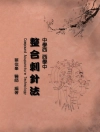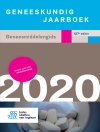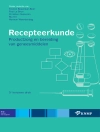From the emergence of clinical sleep medicine marked by the establishment of the harbinger Stanford Sleep Disorders Clinic in the mid 1970s, offspring sleep dis- ders clinics and centers have grown exponentially with the recognition of the unmet diagnostic and treatment needs of the reservoir of patients suffering from sy- toms of what are now recognized and classi?ed as the nosology of human sleep disorders. Important in the growing armamentarium of treatment options for the sleep practitioner are both traditional and newer pharmacological agents, including over-the-counter, non-traditional, and prescription types, that are all used to treat, sometimes adjunctively, most clinically recognized sleep disorders. Although there are numerous academic treatises and reviews dealing with in- vidual treatment alternatives for the diversity of recognized sleep disorders, no one comprehensive resource, extant, has dealt with pharmacological treatment options and strategies for the major human sleep disorders associated with a panoply of symptomatic conditions. The present volume and its series of chapters individually focusing on a range of human conditions, from pediatric sleep disorders to sle- relateddisordersofindividualssufferingfrom Alzheimer’sdementia, uniquelycover the wide range of human medical conditions amenable to thoughtfully sleep-related applied drug therapy. The Editors have brought together a superb group of internationally respected sleep clinicians, and researchers, that provide state-of-the-art analysis of the current basic and clinical perspective regarding the most common sleep disorders that are amenable to pharmacological treatment. In each chapter the authors outline a th- oughhistoricalbackgroundoftheparticulardisorderandreviewthebasicpre-clinicalstudies leading to current treatment options.
Table of Content
Primary and secondary insomnia.- Primary insomnia: diagnosis and treatment.- Neuropharmacology of obstructive sleep apnea and central apnea.- Narcolepsy syndrome: a new view at the beginning of the second millennium.- Sleep disturbances in restless legs syndrome (RLS) and periodic limb movements (PLM).- Sleep disturbances in anxiety disorders.- Sleep disturbances in affective disorders.- Sleep disturbance in schizophrenia.- Clinical pharmacology of sleep disturbances in children and adolescents.- Assessment and treatment of sleep disturbances in aged population.- Sleep disturbances in Alzheimer’s disease.- Sleep disturbance during menopause.- Chronopharmacology and its implications to the pharmacology of sleep.- Overview of currently available benzodiazepine and nonbenzodiazepine hypnotics.- Rebound and withdrawal with benzodiazepine and non-benzodiazepine hypnotic medication.












